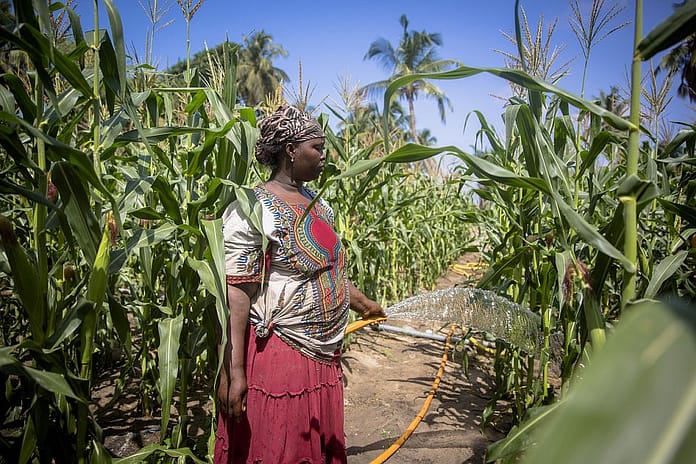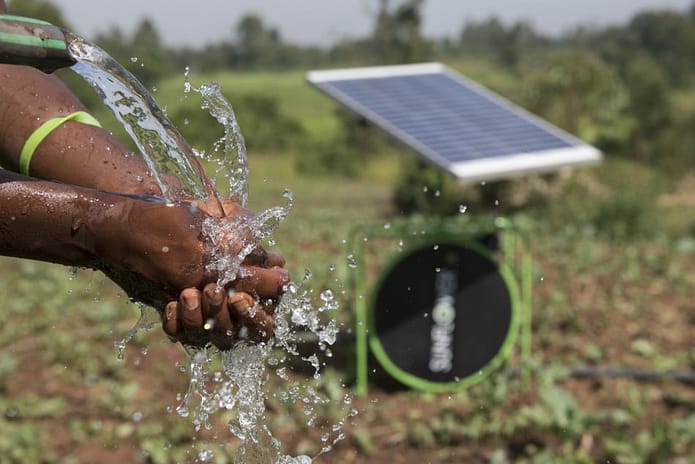Global assessments find that crops grown with arsenic contaminated-groundwater can contribute significantly to our food production — and that international crop trade plays an important role in redistributing the risk globally.
By Mohammad Faiz Alam and Karen G. Villholth
Arsenic in drinking water is known to pose a significant threat to public health, contributing to a range of illnesses including cancer, skin lesions, developmental effects, cardiovascular disease, and neurotoxicity. Research has shown the problem is much more widespread — and that between 94-220 million people globally are exposed to arsenic levels in groundwater that exceed the World Health Organization (WHO) drinking water guideline value.

Arsenic risk from food grown with arsenic-contaminated groundwater
It is not only through drinking water that humans are exposed to arsenic risk. Irrigation with arsenic-contaminated groundwater can lead to elevated levels of arsenic in soil, which is subsequently taken up by crops before finally finding its way to our dining tables. As a result, there is an increasing recognition in many parts of the world that crops irrigated with groundwater containing arsenic can significantly increase arsenic-related health risks, depending upon individuals’ food consumption habits and daily rice intake levels.
While many studies have highlighted increased arsenic intake risk from the crop pathway, little was known previously about the prevalence and distribution of the risk globally.

Irrigating with arsenic-contaminated water
A recently published paper by IWMI — utilizing the latest global datasets on crop production, irrigation, and arsenic risk — reveals that, globally, roughly 20 percent of irrigated areas for 42 key crops are irrigated with groundwater in regions where arsenic risk in the aquifers is high. What is particularly concerning is that two-thirds of such irrigated areas are used for growing major staple crops including rice, wheat, and maize. Indeed, in some countries, production from arsenic-contaminated irrigation groundwater could be as high as 40 percent of total production of these crops.

Crops produced domestically represent the main risk pathway for countries where extensive groundwater irrigation takes place in high arsenic risk areas. These include known hotspots of arsenic contamination in the South Asian countries of Bangladesh, India, and Pakistan. It is estimated that more than 25 percent of rice, wheat, and maize produced in these countries derives from groundwater irrigation in high arsenic risk areas. The exposure risk from crops typically comes in addition to the exposure risk posed by drinking water.
International food trade redistributes the risk
Results show that in international crop trade flows up to 11 percent of the rice trade, two percent of wheat trade, and four percent of maize trade originates from production in high arsenic risk areas. With roughly 80 percent of countries globally dependent on food imports to meet at least part of their food supply needs — especially with regard to staple crops — the arsenic risk is essentially distributed globally. The greatest exposure risk from trade is borne by countries with a high dependence on food imports, particularly in the Middle East and small island nations for which all arsenic risk in crops is imported.
Climate change and irrigation expansion into arsenic risk areas
The study also shows that as climate change advances, food production may increasingly come from arsenic risk areas throughout the world, as countries expand groundwater irrigation at the expense of surface water irrigation and rain-fed agricultural cultivation. This trend further increases the risk of exposure and intake. Groundwater irrigation expansion into areas presently rain-fed or irrigated by surface water can increase current production of rice, wheat, and maize in arsenic risk areas by nearly 180 percent. The risk from such expansion is already imminent in many locations, but particularly prevalent in South and Southeast Asia.
The study represents a first step towards improving our collective understanding of the magnitude of global risk stemming from crops irrigated with arsenic-contaminated groundwater. The findings call for a better, more nuanced understanding of the relative risk of arsenic exposure through food intake, given the growing influence of trade and increased groundwater reliance for crop production.
Citation:
Alam, M.F.; Villholth, K.G.; Podgorski, J. 2021. Human arsenic exposure risk via crop consumption and global trade from groundwater-irrigated areas. Environ. Res. Lett. 16, 124013. https://doi.org/10.1088/1748-9326/ac34bb
















